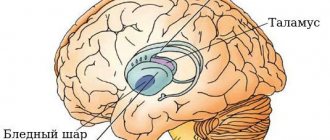Updated July 23, 2021 901 Author: Dmitry Petrov
Hello, dear readers of the KtoNaNovenkogo.ru blog. Today we will talk about such a term as TRAILS, which are actively used in literature.
Although in our everyday speech we constantly use these techniques without even knowing it.
For example, when we praise our father’s golden hands, we are afraid to buy a pig in a poke, or we say that we waited half a day, although in fact only fifteen minutes have passed.
Trails
Trope is a rhetorical figure, word or expression used in a figurative meaning in order to enhance the imagery of language and the artistic expressiveness of speech. Tropes are widely used in literary works, oratory, and everyday speech.
The distinction between tropes and figures is not always clear; the classification of some figures of speech (such as epithet, comparison, periphrase, hyperbole, litotes) causes disagreement on this issue. M. L. Gasparov considers paths in general as a type of figures - “figures of rethinking.”
There is no generally accepted classification of tropes.
Since the second half of the 20th century, tropes have been actively studied within the framework of the structuralist paradigm and neo-rhetorics by such scientists as R. Jacobson, R. Barth, Ts. Todorov, representatives of the Liege school, etc. Three main tropes have been identified: metaphor, metonymy and synecdoche. Attempts to identify one primary trope from them, to which the other two could be reduced, gave contradictory results. Thus, the Liege school and Ts. Todorov see such a primary trope in synecdoche, and W. Eco - in metaphor.
Main types of trails:
- Metaphor
- Metonymy
- Synecdoche
- Epithet
- Hyperbola
- Dysphemism
- Pun
- Litotes
- Comparison
- Periphrase
- Allegory
- Personification
- Irony
- Pathos
- Sarcasm
- Euphemism
The role of visual and expressive means in literature and beyond
There are so many tools for creating an image, conveying the smallest shades of mood, conveying atmosphere, evoking emotions, reflecting the entire palette of colors of life and remaining in memory for a long time!
The great and powerful Russian language is rightfully considered as such precisely because it makes it possible to express one’s feelings, to make communication lively and sincere.
The means of artistic representation are used not only in literature. They also decorate our colloquial, everyday speech.
We, without hesitation, use figurative and expressive words: “cornflower blue eyes”, “blind rain”, “golden hands”, “brilliant mind”, “soul sings”, “head is buzzing”, “scared to death”, “a hundred years I know you,” “the cat cried,” “the weather is whispering,” and we understand perfectly well what we are talking about.
Principles of Trope Classification
There is still no generally accepted classification of tropes.
metaphor and metonymy are certainly classified as tropes .
Synecdoche is often defined as a type of metonymy, namely as quantitative metonymy. It seems more reasonable to distinguish synecdoche into an independent trope - based on the principle of “co-impliation, conjunction”, which A.A. insisted on. Potebnya: “the meaning of A is completely contained in x, or, conversely, x embraces all of A without a trace; for example, person (A) and people (x).” The named object here is “included” in another (implied) one, which the principle of contiguity does not require. According to Potebnya, a poetic epithet (Epitheton ornans), in contrast to a logical (“prosaic”) definition, is synecdochic, since “it does not produce the elimination from thought of species that do not contain the sign designated by it, but the replacement with a certain image of one of many indefinite " From a logical point of view, the poetic epithet is tautological, redundant: “My little birds, oh you, my nosed light” (an example given by Potebnya).
Other techniques of allegory are close to metaphor, metonymy, and synecdoche: hyperbole, litotes, periphrasis, comparison, epithet (the list goes on). The conventionality and unclear boundaries between the tropes themselves and related stylistic devices is evidenced by the discrepancy between the lists of tropes offered in textbooks and terminological dictionaries.
If we turn to the history of the issue, to the classification of “figures of rethinking” in ancient “rhetoric”, then here these figures are divided into two groups - depending on the extent of the context necessary to understand the figurative meaning of the expression. The paths of utterances and the paths of sentences are differentiated . Thus, in the authoritative “Dictionary of Ancient and Modern Poetry” N.F. Ostolopov (1821) included metaphor, metonymy, synecdoche, antonomasia, catachrisis among the tropes of speech consisting “in the transfer of one word from its own signification to another” [i.e. catachresis] and metalepsis. The paths of sentences “consist in the transfer of an entire sentence from its own signification to another”; these are allegory, periphrasis, hyperbole, emphasis, irony; these paths are “otherwise called figures.” The same paths of sayings and sentences are listed by M.V. Lomonosov in his “Brief Guide to Eloquence” (1748), to which the definitions in Ostolopov’s Dictionary clearly go back.
The principle underlying this division remains productive. It is also recognizable in modern classifications, although the terminology has changed: the contexts differ: the immediate and the wider, in which the meaning of the allegory is revealed. Metaphor (“rain pearls”, “the sun looks at the fields”, “resting field” - F.I. Tyutchev), metonymy (“the love of space”, “the call of the future” - B.L. Pasternak), synecdoche (“her voice sang”, “the white dress sang in the beam” - A.A. Blok) are recognized in the phrase. In the old-fashioned way, these are “speech paths.”
At the same time, understanding a work of art not only as a linguistic, but also as an objective, figurative picture of the world, prompts us to reconsider the status of allegory , as well as its related symbol , traditionally considered among the techniques of speech allegory (according to Lomonosov and Ostolopov, allegory is a “trope of sentences” ").
between the allegorical nature of a word and the allegorical nature of an image (of a depicted object). It is more correct to attribute allegory and symbol, as E. Faryno believes, “not to the sphere of language, but to the sphere of the “world” of the work: these are “not words, but meaningful elements of the world (characters with their gestures and costumes, objects with their properties and many other phenomena) "
After all, one and the same object can be named using different nominations, including indirect ones, in particular tropical ones. “I plunged into the sea of clover...” (Blok) - the metaphor reveals the similarities between the clover field and the sea, but it is clear that the subject of speech is the clover field. In the case of an allegorical image, one object is named, but another is implied or thought along with it.
Thus, the fable often uses allegory: its characters are animals, but they are endowed with human vices. “Morality” speaks directly about people, as, for example, in Krylov’s fable “The Swan, the Pike and the Cancer”: “When there is no agreement among the comrades, // Things won’t go well for them, // And what will come out of it is nothing but torment " A fable allegory is not an accidental technique: by presenting animals instead of people, the fabulist simplifies and makes this or that everyday situation extremely clear; It is largely due to the allegory that “morality” is illustrated so convincingly.
Initially, the fable was a rhetorical device, and the allegory helped to persuade listeners to one or another opinion or decision. A.A. Potebnya emphasized that in order to successfully fulfill its rhetorical function, the fable “should not stop at the characteristics of the characters”; hence the “practical benefit” of introducing animal characters. The scientist likened them to chess pieces, each of which “has a certain course of action: the knight moves this way; king and queen so-and-so; Everyone who starts the game knows this, and it is very important that everyone knows this, because otherwise they would have to agree on this every time, and it would not come to the game itself.”
And yet:
TRAILS (according to traditional classification) are divided into:
– verbal;
– grammatical.
Verbal tropes are based on the use of words in a figurative meaning. Verbal tropes are usually divided into four groups depending on what relationships between the images connected in them underlie them:
1. similarity;
2. contiguity;
3. contrast;
4. identity.
Paths of similarity:
- Metaphor . It involves replacing one signifier with another signifier on the basis that the corresponding signifieds are similar. For example, Titus Livy wrote that Cato constantly barked at Scipio. In this case, the figurative use of the verb “bark” is based on the comparison of Cato with a dog. With metaphor, as with other tropes, not the entire sentence is replaced, but only some of its parts. This example is interesting because it allows, without saying it directly, to actually identify a person with a dog. Consequently, a metaphor in some cases can serve to express a thought in a softer and more acceptable way, which, if expressed directly, might turn out to be very rude.
Note that in argumentative rhetoric, which is the subject of our consideration, figures of speech and tropes are defined (V.P. Moskvin) as the act of using or forming a nominative unit in order to enhance the effectiveness of speech. As a result, figures of speech in the process of eristic argumentation are used in two main functions:
- For manipulative purposes, since both logical and psychological tricks most often receive linguistic expression, and are often even based on certain features of a linguistic sign (for example, polysemy, features of internal form, similarity or consonance of words, their homonymy).
- For gaming purposes. If we understand the game as “the interaction of parties whose interests do not coincide,” and “in conditions of divergent interests of the parties (players), each side seeks to influence the development of the situation in its own interests.” Since argumentation is a kind of game, it “always contains a risk of failure, just as a game contains a risk of defeat. For example, a small fragment from the speech of lawyer P.A. Drozdov in defense of a man accused of rape: “It started to rain again, and our couple, to shelter from the rain, stood under a thick tree. Kaduev again tries to hug Nina, he presses her to him, and then lightning flashes - no, in fact there was no lightning, but Oleg was hit with an electric shock. It was Nina who kissed him.” The lawyer skillfully plays up the fact that the events took place during the rain. On this basis, he calls lightning a kiss (and everyone knows that during a thunderstorm you should not stand under a tall tree, the top of which could be struck by lightning).
Metaphor is not the only instance of a similarity-based trope. Other tropes are built on the same principle: hyperbole, meiosis, personification, reification, catachresis.
2. When personified, the inanimate is interpreted as living: “Tell me, what did your naked sword, Tuberon, do in the battle of Pharsalus? Whose chest was it trying to pierce? (Cicero).
- When reified, the living is likened to the non-living:
Make way, O old man of the sea,
Give shelter to my wave (M.Yu. Lermontov).
There may be cases when the living is assimilated to the living, or the non-living is assimilated to the non-living. But these metaphors did not receive special names. For example: “For dozens of years the manager sucked their strength, for decades with satanic cunning he entangled them in a network of conditions, contracts and penalties” (F.N. Plevako). Obviously, in this case the speaker is comparing a person to a spider.
- 4. Hyperbole - a trope in which, as a result of renaming, an exaggerated quantity of property is attributed to an object: “If I wanted to mourn this event and mourn it not in the presence of Roman citizens, certain friends of our state, people who heard the name of the Roman people, if I turned not to people, but to wild animals, or even - to go further - if I turned to rocks and cliffs in the depths of the deserts, then even all dumb and inanimate nature would be shocked by such terrible, such outrageous cruelty" (Cicero) .
- Meiosis (litotes) is the opposite trope of hyperbole. If in a hyperbole the properties of an object are exaggerated, in meiosis they are, on the contrary, minimized. For example, “it costs a penny”, “two steps from here”, “it will only take one minute”, etc.
- Catachresis is a trope in which the rapprochement between objects is carried out on the basis of the most common property. When we call a table leg a leg, we use catachresis.
Adjacent paths:
- Metonymy based on the transfer of meaning by contiguity. Contiguity is understood very broadly: it is spatial proximity, proximity in time, connection between part and whole, and proximity in the space of ideas. Metonymy is a very common phenomenon (“ate a plate”, “drank a cup”). Sometimes they talk about the author instead of the work:
It happens like this: you get bored in the morning
And as if you were waiting for something,
Then you leaf through Pushkin,
Then you’ll leaf through Pushchina (Sasha Sokolov “Between a Dog and a Wolf”).
- In the group of metonymies, a special case is distinguished - synecdoche , which includes the transfer of meaning from part to whole (or vice versa), as well as from abstract to concrete (or vice versa): “Youth sat in front of him” (Ilf, Petrov), “A penny saves the ruble "
It should be noted that the function of metonymy is not limited to simplifying the speech act. It is also capable of influencing and conveying a variety of shades of assessment. So, when they say “crusts” about a diploma, they emphasize the emasculation of the education itself: only crusts - no content.
Paths of contrast:
- 1. Antiphrasis . In this case, the word is used in the opposite meaning. Naturally, we must also consider this use to be figurative, since it differs from the typical literal meaning. The peculiarity of antiphrase is that we can use almost any word in the opposite meaning; the possibilities of words in terms of other tropes are more limited in this regard. For example: “The indictment... mechanically lists the testimony of all witnesses without exception, and regardless of whether these testimonies are relevant to the case, whether they incriminate the accused or not, these testimonies, without any serious analytical analysis, are presented as evidence of the alleged “guilty” of the accused” (I.M. Kisenishsky).
- Astheism is a type of antiphrase, in which a word denoting something negative is used in a positive sense: “... The devil will not play like he, the damned one, played the double bass, he used to make, rogue, such equivocations as Rubinstein or Beethoven, let’s say, it won't work on the violin. He was a master, a rogue” (A.P. Chekhov). The difference between astheism and periphrasis is only in which meaning - positive or negative - is original and which is figurative. Otherwise these paths are identical.
Lexical means of the Russian language
Every day we use words that in one way or another decorate our speech and make it more expressive. Vivid tropes, examples of which are countless in works of art, are no less important than lexical means.
- Antonyms are words that have opposite meanings.
- Synonyms are lexical units that are close in meaning.
- Phraseologisms are stable combinations consisting of two or more lexical units, which in terms of semantics can be equated to one word.
- Dialectisms are words that are common only in a certain territory.
- Archaisms are outdated words denoting objects or phenomena, modern analogues of which are present in human culture and everyday life.
- Historicisms are terms denoting already disappeared objects or phenomena.
Syntactic figures
Such techniques are achieved through sentence construction and include word order, punctuation; they make for an intriguing and interesting sentence design, which is why every writer strives to use these tropes. Examples are especially noticeable when reading the work.
- Polyunion is a deliberate increase in the number of unions in a sentence.
- Non-union - the absence of unions when listing objects, actions or phenomena.
- Syntactic parallelism is a comparison of two phenomena by depicting them in parallel.
- Ellipsis is the deliberate omission of a number of words in a sentence.
- Inversion is a violation of the word order in a construction.
- Parcellation is the deliberate division of a sentence.








